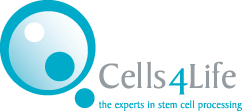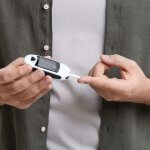Here at Cells4Life, we’re always looking for ways to keep you up to speed with everything in the fast-moving world of stem cell technology. We know that as future parents, you’re keen to know how it works. And, whether it could work for your family.
Just imagine: a longer, potentially healthier life for your unborn children that would not have been possible, just a generation ago.
We want you to have the information you need for you to start making informed decisions .So, we’ve put together this back-to-basics blog: what exactly IS stem cell banking (or placenta banking?) And, is banking stem cells a good idea?

The Future Looks Bright
Just as antibiotics revolutionised medicine in the last century, so the new millennium has surely given us one of the most life-affirming developments ever: a way to harvest stem cells for highly effective, regenerative medicine.
In other words, a way in which human cells, organs or tissues can be replaced or repaired – or even start to function properly for the very first time.
Stem Cells and Stem Cell Banking: How It Works
In a nutshell, when babies are born, the blood in the umbilical cord is rich in stem cells. These are unique cells that, given the right chemical or genetic signals can go on to form more specialised cells of different shapes, sizes and functions.
After a few more cycles of division, they can become even more specialised, with properties that scientists can use to treat the root cause health issues. Heart disease, for example. Spinal cord injuries. Dementia. Even cancer. Far too many to list here.
Babies have lots of stem cells, as you can imagine. As building blocks, they’re essential for natural body growth and repair.
When we age, we lose these cells. Or rather, we have fewer of them in relation to the other cells in our bodies.
Therefore, it makes sense to store them when they are at their most plentiful. Which is: soon after birth. If you think about it, your baby’s cord blood could even save his or her life (or their siblings’ lives), in future years.
Hence, stem cell banking
What is Stem Cell Banking?
Quite simply, stem cell banking is the collection and cryogenic storage (ultra-low temperatures) of a new born infant’s stem cells in their umbilical cord blood and tissue. In the future, scientists can then use them in cell treatments or in clinical trials.
You can specify that they’re solely to be used to benefit your child or your family or, to help others, be made available publicly.

The collection process is non-intrusive – after all, you will just have given birth! Moreover, it’s painless, and completely safe.
Equally, babies don’t follow due date timetables. They arrive when they feel it’s time. And, not before.
So, we offer a 24/7, 365 days per year service for your peace of mind. You’ll have your own collection kit, and we’ll assign you a phlebotomist (a specialist who draws and collects blood). Everything will be All Stations Go on the day.
Find out more by requesting your Free Welcome Pack below
Request a Welcome Pack
Find out more about cord blood banking by downloading a Welcome Pack now.
Something Worth Knowing
Slight heads up, if we may, and something that’s totally unique to us.
The availability of more cells could mean the difference between having enough of them to treat an adult, rather than a child. Likewise, more treatments for the same health issue. Hence, CellsPlus, a processing method that delivers 3 times more stem cells at the point of therapy than our standard Cells service.
How Long Can Stem Cells be Stored?
Currently, there’s no use by date.
As far as we know, storing stem cells cryogenically literally freezes them in time, without any degradation. Stem cell banking in 2022 could be a life-changing solution to your grown-up children in 2072, even when you are no longer around.

Stem Cell Banking in England. Is it Popular?
Yes, in a word. Throughout England, and the rest of the UK, stem cell banking has seen a huge rise in its reputation and acceptance.
Figures available via the BBC in 2019 showed that the number of umbilical blood and tissue units that were banked privately in 2018 was 27,028. This, compared to 16, 965 in 2014 was a massive increase. We expect the numbers to rise, along with the profile of this outstanding medical technology.
How Much Does Stem Cell Banking Cost?
Cells4Life offers stem cell banking from as little as £1,495, with a range of prices up to £5,540 to suit future parents’ budgets and needs.
Is Banking Stem Cells Worth It?
Now, isn’t that worth thinking about?
If you’d like more information about stem cell banking from Cells4Life, click here to request an information pack. We’d be delighted to hear from you.








